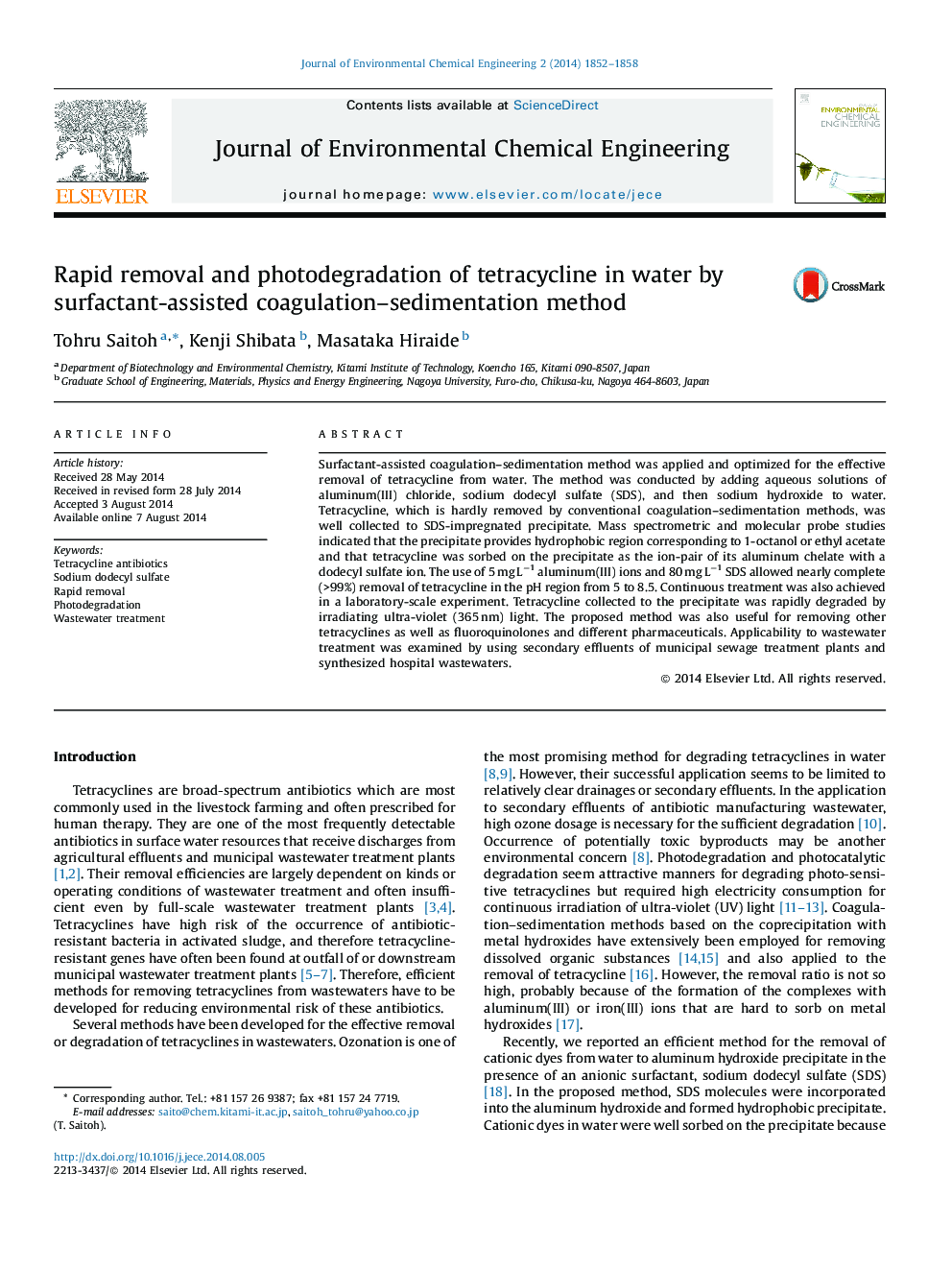| کد مقاله | کد نشریه | سال انتشار | مقاله انگلیسی | نسخه تمام متن |
|---|---|---|---|---|
| 222019 | 464268 | 2014 | 7 صفحه PDF | دانلود رایگان |
• An effective wastewater treatment method for removing tetracycline was designed.
• Use of 5 mg L−1 Al(III) and 80 mg L−1 SDS allowed nearly complete removal.
• Degradation of tetracycline by UV irradiation was significantly improved.
• Proposed method was applicable to the removal of different pharmaceuticals.
Surfactant-assisted coagulation–sedimentation method was applied and optimized for the effective removal of tetracycline from water. The method was conducted by adding aqueous solutions of aluminum(III) chloride, sodium dodecyl sulfate (SDS), and then sodium hydroxide to water. Tetracycline, which is hardly removed by conventional coagulation–sedimentation methods, was well collected to SDS-impregnated precipitate. Mass spectrometric and molecular probe studies indicated that the precipitate provides hydrophobic region corresponding to 1-octanol or ethyl acetate and that tetracycline was sorbed on the precipitate as the ion-pair of its aluminum chelate with a dodecyl sulfate ion. The use of 5 mg L−1 aluminum(III) ions and 80 mg L−1 SDS allowed nearly complete (>99%) removal of tetracycline in the pH region from 5 to 8.5. Continuous treatment was also achieved in a laboratory-scale experiment. Tetracycline collected to the precipitate was rapidly degraded by irradiating ultra-violet (365 nm) light. The proposed method was also useful for removing other tetracyclines as well as fluoroquinolones and different pharmaceuticals. Applicability to wastewater treatment was examined by using secondary effluents of municipal sewage treatment plants and synthesized hospital wastewaters.
Figure optionsDownload as PowerPoint slide
Journal: Journal of Environmental Chemical Engineering - Volume 2, Issue 3, September 2014, Pages 1852–1858
